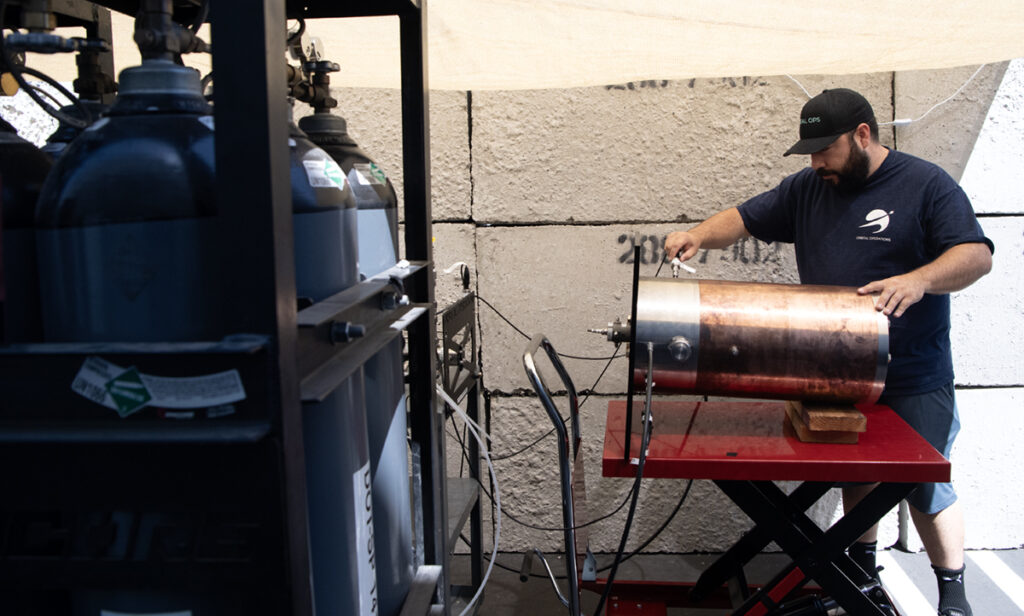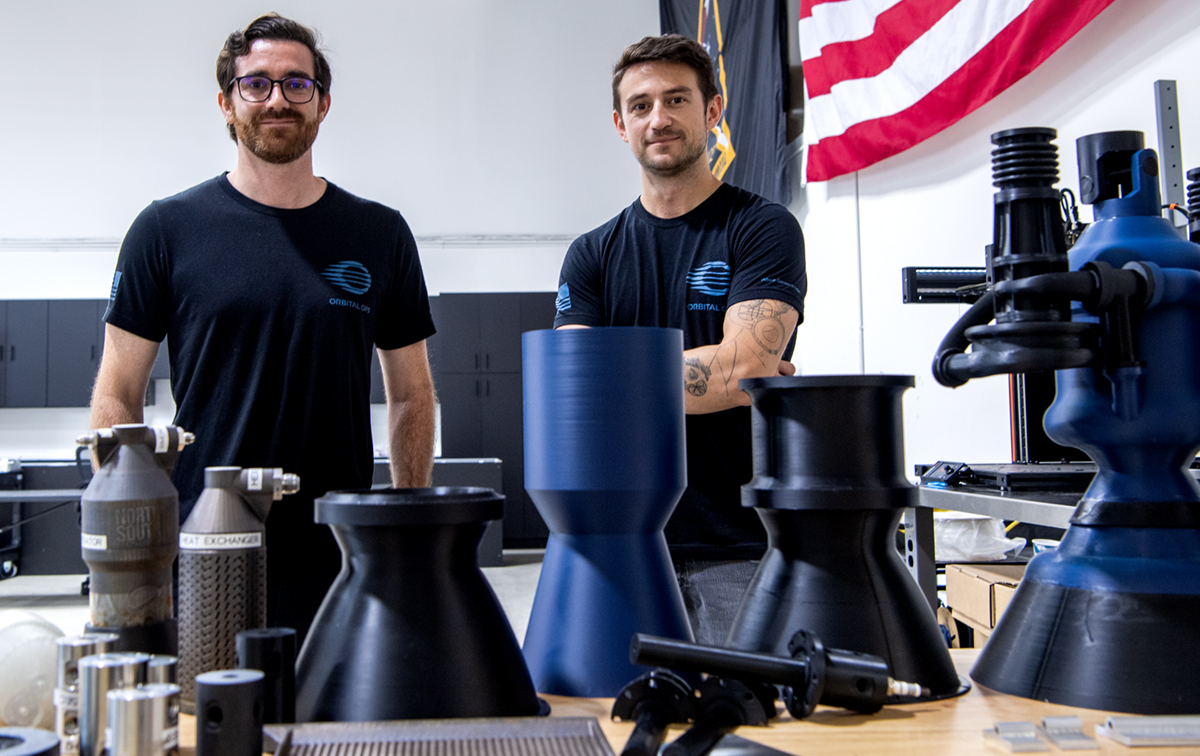Benjamin Schleuniger and Ross Doherty’s business is built on the idea that the next great war between the U.S. and another superpower will begin in space. That is, of course, unless their invention can stop it.
From their 5,500-square-foot warehouse in North Long Beach — they leased in June — their company, Orbital Operations, hopes to develop by 2029 a highly mobile satellite that, once rocketed up into space, will lie dormant in orbit until called upon to intercept enemy spacecraft.
The two formed the company in 2023 while working at another Long Beach aerospace lab, Relativity Space. The pair actually sat next to each other; Schleuniger handled designs and Doherty oversaw the manufacturing and testing.
Poking fun at Doherty, Schleuniger said his team was basically paid to destroy “the things we designed.”
“(Doherty) was running the team of technicians and manufacturing engineers that would go and break all of our stuff and tell us why, and tell us to fix it,” he joked.
At company barbecues, the pair came up with their concept and even recruited who would become a lead engineer from Seattle-based aerospace company Apex.
The key to their business model is developing a spacecraft not meant to be flown into space, but around it, from low orbit or LEO, to more than 22,000 miles above Earth’s surface, just above what is known as geosynchronous orbit.
From that vantage point, older Pentagon and spy satellites sputter around with 5 to 50 pounds of thrust, capturing vital GPS data from a distance that takes longer to reach the surface.
Lying dormant in low orbit, their craft — dubbed Astraeus — would guard these satellites, sprinting to a target within hours using a 15,000-pound–thrust engine. Outfitted with robotic arms and a laser, it could grab hold of a spacecraft and fry its camera lenses.
Similar advances have come out of Russia and China, Schleuniger said, while a countermeasure by U.S. aerospace defense would have to fit something onto a rocket and launch it into orbit — at least a five-month process.
“We do not have that capability to do a rendezvous out in orbit, grab something and move it,” he said.
The two share the belief with U.S. defense officials that future attacks on American allies would likely start 22,000 miles from Earth, abducting upper orbit satellites that guide vital communications, surveillance and GPS systems.
“If there’s a war in the South China Sea, the first thing they’re going to do is remove GPS and Naval communications,” Schleuniger said.

“I honestly think right now we are in a space arms race,” Schleuniger said. “Let’s be real. We did not go from biplanes to jets in thirty years because of commercial ambitions … thirty years from the Wright brothers to jets. I think space is going to wind up doing the same thing there.”
It’s their hope that this spacecraft will serve as a further deterrent against a greater conflict.
Raising an $8.8 million seed round in April, the company hopes to have a testable engine by year’s end.
There’s also the difficulty of building a cooling system, which they hope to demo by sometime next year. Once in space, the craft will rest in cryogenic sleep — a cool, 20 degrees Kelvin, or -423.67 Fahrenheit — to keep its hydrogen and oxygen fuel from boiling off.
Later models might be used for delivery of supplies, studies of communications, vision or rendezvous and docking, servicing of nuclear‐powered vehicles and collection of space debris. One company has already approached them to provide a ferry service to asteroids using magnets.
“A Pony Express for asteroid mining,” Doherty said.
While they may need to expand at some point — possibly to a 15,000-square-foot spot at the airport — for now, the team is still coming together.
“Haven’t even finished the Ikea furniture, yet,” Schleuniger joked, pointing to a topless counter and a push cart with all their utensils that make up their kitchen.

